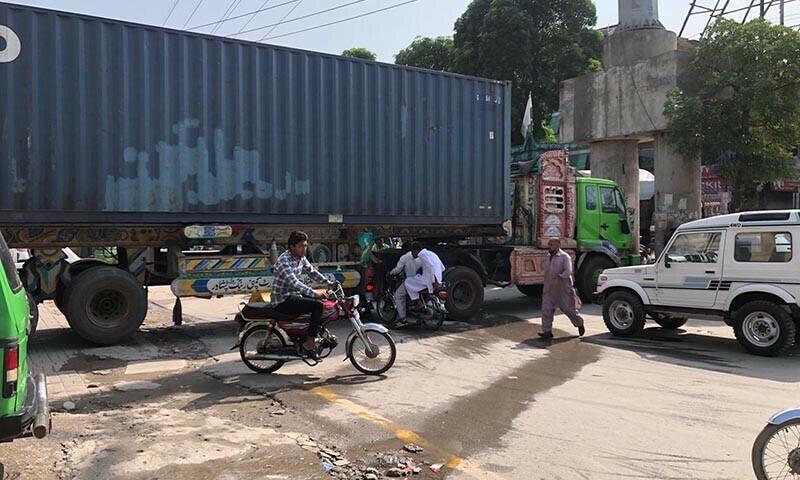
Protests, Chaos, And Profit: A Tale Of Unrest In Pakistan
Political Protests: A Cycle of Resistance and Suppression
Whenever a political party calls for a protest, the government aims to thwart it. A striking example is the 2009 protest led by the PML-N during Asif Zardari's tenure. The march from Lahore to Islamabad faced stiff resistance as highways were blocked with shipping containers. Despite these measures, negotiations swiftly ended the protest before it could even begin.
Traveling by train to Lahore at the time, I witnessed containers blocking roads at every turn. We had hoped inner-city routes would be clearer, but the restrictions were so severe that we were forced to stay overnight in Shadbagh instead of reaching Defence as planned.
Also Read:
A more memorable protest was PTI's sit-in at Islamabad's D-Chowk, which lasted for months. More recently, PTI once again threatened another sit-in until their demands were met. The government, determined to stop the protest, blocked major roads with containers. Despite their efforts, demonstrators reached Islamabad, prompting the authorities to summon the military with orders to shoot on sight if necessary. Who initiated the violence-civilians, police, or the military-remains unclear.
The Role of Media and the Battle of NarrativesMedia coverage of these protests was divided, with some outlets supporting the government and others backing PTI. Reports varied wildly: one channel claimed security forces had injured 601 protesters and killed 40, while another reported that armed protesters had attacked law enforcement, causing casualties among security personnel. Both sides denied initiating violence, leaving the truth elusive.
One viral video showed security forces throwing a man praying on top of a container, breaking his neck. Later, another video surfaced showing the same man alive and well, raising questions about media credibility and the role of AI or manipulation in such footage.
A Nation's Loss Amid Government ResponsibilityOpposition protests are a common part of democracy, but the government's response often exacerbates the crisis. Instead of blocking roads, if the authorities had allowed PTI to protest peacefully and resolved the issue through dialogue, the loss of life, property damage, and disruption to daily life could have been avoided. Schools, offices, and markets remained closed, wasting precious resources and time.
Prime Minister's statement holding PTI solely responsible for the chaos ignores the government's duty to maintain law and order and protect citizens' lives. Public property, built with taxpayer money, belongs to the people. Destroying it during protests harms no one but the nation itself.
A Unique Business Opportunity Amid ChaosAmid the turmoil, a fascinating example of entrepreneurial ingenuity emerged. In Rawalpindi, where a barricade of containers and a wall blocked the road, Pashtun men placed wooden planks on either side, allowing motorcyclists to bypass the blockade-for a fee of fifty rupees per bike. Similarly, motorcyclists at various points offered rides over the containers, helping stranded protesters reach their destination.
This episode reveals the entrepreneurial spirit of Pakistanis, especially Pashtuns, and also raises the question: Why do such resourceful individuals engage in the destruction of their own country in the name of protest?
A Sobering ConclusionIronically, those who have long failed to bring peace to the country's most terror-stricken regions managed to clear Islamabad overnight when the government's interests were threatened. This proves that restoring peace is possible-if the government's will aligns with the people's needs. Unfortunately, for the common citizen, all they receive are hollow promises and empty statements.
In the end, protests should be a platform for dialogue, not destruction. Until both the government and the public realize this, the cycle of violence and loss will continue, leaving the nation to bear the brunt of its own discontent.

Legal Disclaimer:
MENAFN provides the information “as is” without warranty of any kind. We do not accept any responsibility or liability for the accuracy, content, images, videos, licenses, completeness, legality, or reliability of the information contained in this article. If you have any complaints or copyright issues related to this article, kindly contact the provider above.






















Comments
No comment